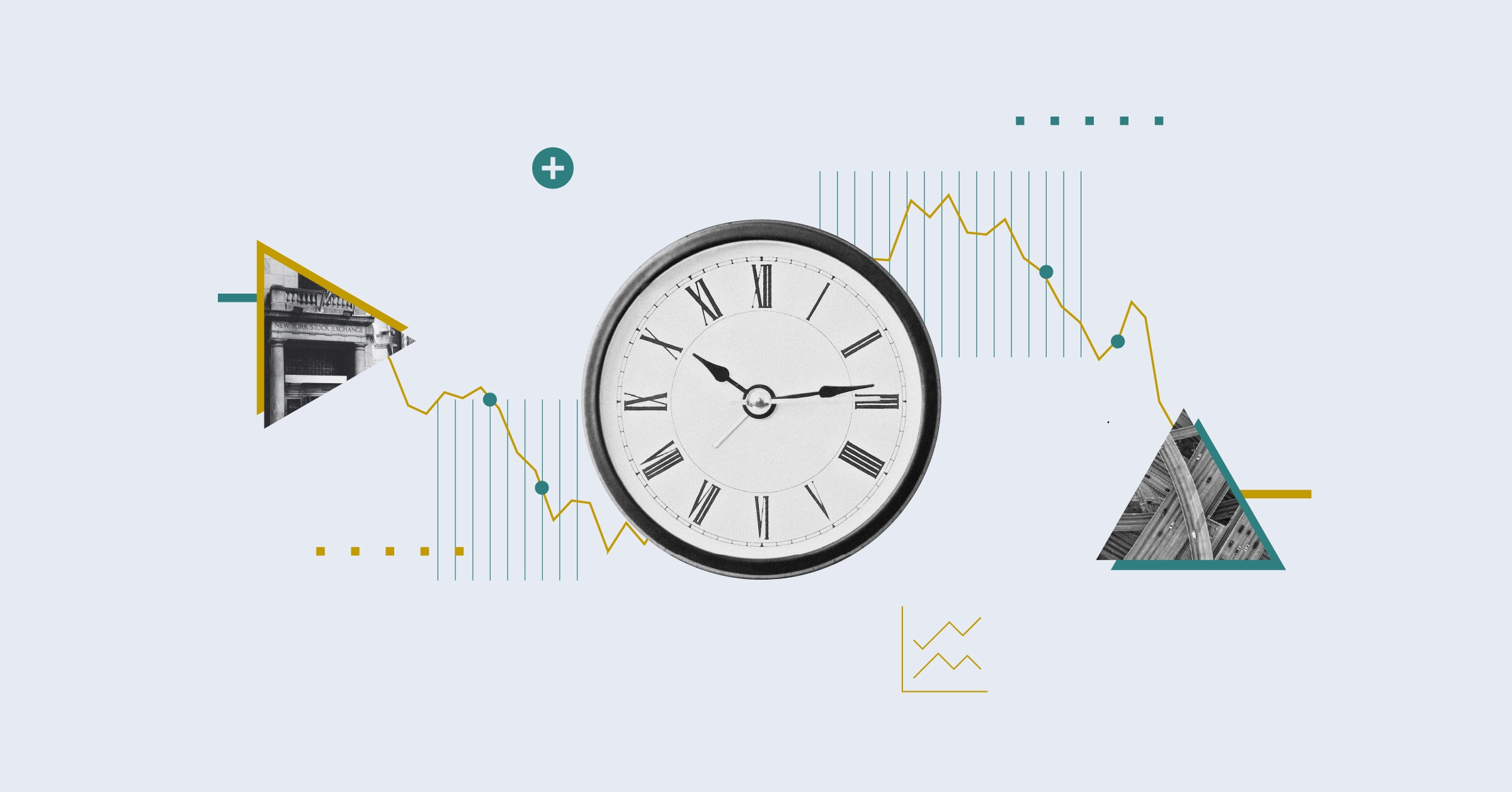In the first part of this two-part series, we explained some of the key concepts investors need to understand about volatility and the investment products that offer volatility exposure.

Volatility measures such as the VIX provide an excellent proxy for the amount of uncertainty in the market, and if there's anything the stock market does not like, it's uncertainty

One of the most important considerations when it comes to taking on volatility exposure is that spot volatility indices like the VIX are not investable. As such, investors and index and product providers can only achieve volatility exposure via the futures market. Indices tracking volatility futures are tracked by exchange-traded products (ETFs) and exchange-traded products (ETPs) to offer investors an easy and liquid vehicle to access this relatively new “asset class”.
In the second part of this series we provide a closer look at the suitability of this new “asset class” and explain the details of three products offering exposure to volatility.
The Suitability of Volatility
Investing in volatility has some noted benefits but also significant drawbacks. As we have discussed, volatility can be a superb diversifier as evidenced by its severely negative historical correlation to equities.
First and foremost investors need to understand what part volatility can and should play in a portfolio. Generally, volatility products are best suited for investors seeking a short-term hedge for their equity portfolio. Nevertheless, predictions of short-term volatility may not seem very helpful to anyone with a multi-year time horizon for their portfolio. After all, the variation of prices in one month will not matter much when you plan to hold your investments for five years or more. But due to the way market prices and volatility interact, it also has some great uses for sophisticated investors looking to manage their asset allocations.
Volatility measures such as the VIX provide an excellent proxy for the amount of uncertainty in the market, and if there's anything the stock market does not like, it's uncertainty. The same effect occurs in the stock market, which is why volatility spikes and price crashes go hand-in-hand. But investors have to pay for protection against market uncertainty.
Ultimately, there is no free lunch in investing. If you want returns, you need to pay for them by taking on risk. If you want insurance, you need to pay for it by giving up returns. The trick is finding the right balance.
Volatility ETPs could provide an interesting tool for asset allocators who want a small bit of insurance against any sudden market crashes. However, due to its complex structure, we would suggest that only the most sophisticated investors consider these funds. Even those who understand the risk and return of these instruments should put up only small stakes to avoid a heavy drag on potential returns.
3 Volatility ETPs to Consider
Currently, three volatility products dominate the European ETP market in terms of net assets. All three of these track indices with built-in mechanisms aimed at helping them to avoid the most insidious instances of contango while attempting to maintain the asset's chief benefit of diversification. Moreover, all three ETFs track their respective indices via synthetic replication.
In terms of assets under management, the Lyxor ETF S&P 500 VIX Futures Enhanced Roll (LVIX) has accumulated the largest share of the volatility pie in the European ETP space, with just over €80 million in assets under management at the time of this writing. By tracking the S&P 500 VIX Futures Enhanced Roll index, the Lyxor ETF achieves a dynamic exposure that shifts between the short-term VIX futures index and the mid-term VIX futures index in an effort to more efficiently control the cost of rolling futures contracts while simultaneously looking to capitalise on spikes in volatility.
The index methodology utilises a rather simple trend-following indicator to adjust its exposure to the respective VIX futures maturities. The indicator looks to yesterday's volatility level relative to the previous 15-day average. If yesterday's volatility level was 1.35x the average, the index shifts into the short-term VIX index at the rate of 20% of the portfolio per day. The inverse is also true. Trend following is inherently based on the assumption that indices that have performed one way over the recent past will continue to perform that way in the near future.
As a result, the Lyxor ETF should allocate higher percentages of its portfolio to the shorter-term VIX futures index when volatility is trending upward and higher percentages of the portfolio to the mid-term VIX futures index when volatility is trending downward. In effect, the dynamic reallocation achieves two aims:
(i) achieves greater sensitivity to spot VIX when volatility is rising and
(ii) subjects itself to less negative roll yield when volatility is low or trending lower.
This all means that an investor seeking to make volatility a permanent part of their portfolio to hedge tail risk would likely consider the Lyxor volatility ETF as a more suitable choice than a non-dynamic volatility ETF.
The ![]() Source Nomura Voltage Mid-Term ETF (VOLT) ranks second to the aforementioned Lyxor fund in terms of assets under management, with just over $50 million in assets at the time of this writing. The Source ETF differentiates itself from other VIX products by tracking the Nomura Voltage Strategy Mid-Term index. The product has a very similar aim to the Lyxor ETF already discussed. It attempts to capture spikes in volatility, while mitigating the cost of holding VIX futures stemming from contango. In order to achieve this objective, Nomura provides volatility adjusted exposure to the S&P 500 VIX Mid-Term Futures Index, allocating between 0% to 100% of the fund to this index and the remainder to a three-month US Treasury Bill rate. Rebalancing happens daily and is triggered when the volatility of the S&P 500 VIX Mid-Term Futures index changes relative to the previous 30 days. If the volatility of the VIX rises above the trailing 30-day average, then the ETF rebalances to obtain greater VIX exposure. In general, this means that the higher the volatility of the VIX, the higher the allocation to the VIX. The rationale is that greater swings in the VIX index tend to precipitate spikes in the VIX index. Consequently, the index methodology is likely more appetising to long-term investors seeking to capture some of the upswing in volatility spikes but avoid the full brunt of negative roll yield associated with the VIX futures indices.
Source Nomura Voltage Mid-Term ETF (VOLT) ranks second to the aforementioned Lyxor fund in terms of assets under management, with just over $50 million in assets at the time of this writing. The Source ETF differentiates itself from other VIX products by tracking the Nomura Voltage Strategy Mid-Term index. The product has a very similar aim to the Lyxor ETF already discussed. It attempts to capture spikes in volatility, while mitigating the cost of holding VIX futures stemming from contango. In order to achieve this objective, Nomura provides volatility adjusted exposure to the S&P 500 VIX Mid-Term Futures Index, allocating between 0% to 100% of the fund to this index and the remainder to a three-month US Treasury Bill rate. Rebalancing happens daily and is triggered when the volatility of the S&P 500 VIX Mid-Term Futures index changes relative to the previous 30 days. If the volatility of the VIX rises above the trailing 30-day average, then the ETF rebalances to obtain greater VIX exposure. In general, this means that the higher the volatility of the VIX, the higher the allocation to the VIX. The rationale is that greater swings in the VIX index tend to precipitate spikes in the VIX index. Consequently, the index methodology is likely more appetising to long-term investors seeking to capture some of the upswing in volatility spikes but avoid the full brunt of negative roll yield associated with the VIX futures indices.
Finally, the Source Nomura Voltage Short-Term (VOLS) sits a distant third in terms of assets under management with roughly $10 million in assets as of this writing. This Source ETF is nearly identical to the prior ETF on offer from Source except that it uses the S&P 500 VIX Short-Term Futures index as opposed to the S&P 500 VIX Mid-Term Futures index to gain volatility exposure. As we have already discussed, moving up the VIX futures curve increases the sensitivity of the index to the spot VIX price fluctuations. As a result, this Source ETF has higher short-term upside potential in the face of rising volatility, but also should exhibit more pernicious negative roll yield effects since contango is usually steepest at the front end of the VIX futures curve.
Investors must be cautious when investing in this fund as prolonged bouts of low volatility will compound the negative roll yield over time. Even still, this ETF is likely more suitable for a buy-and-hold investor looking to achieve longer-term volatility exposure as it dynamically reallocates its portfolio based on the trendiness of VIX.
Morningstar ETF analyst Gordon Rose also contributed to this article.





























